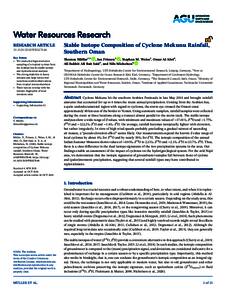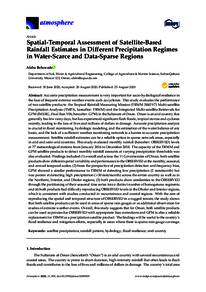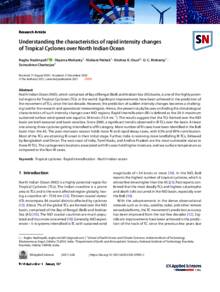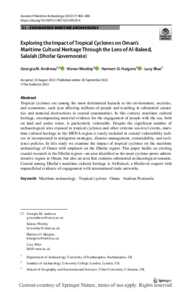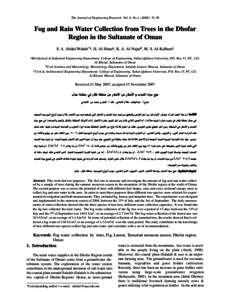وثيقة
Stable isotope composition of cyclone mekunu rainfall, Southern Oman.
المعرف
DOI: 10.1029/2020WR027644
المصدر
Water Resources Research. v. 56, 12, e2020WR027644
المساهمون
الدولة
United Kingdom.
مكان النشر
Oxford
الناشر
Blackwell Publishing Ltd.
ميلادي
2020-12-01
اللغة
الأنجليزية
الملخص الإنجليزي
Cyclone Mekunu hit the southern Arabian Peninsula in late May 2018 and brought rainfall amounts that accounted for up to 6 times the mean annual precipitation. Coming from the Arabian Sea, a quite underdocumented region with regard to cyclones, the storm eye crossed the Omani coast approximately 80 km east of the border to Yemen. Using automatic samplers, rainfall samples were collected during the event at three locations along a transect almost parallel to the storm track. The stable isotope analyses show a wide range of δ values, with minimum and maximum values of −17.01‰ δ18O and −1.77‰ δ18O and −122.2‰ δ2H and −1.6‰ δ2H. On average, rainfall becomes isotopically lighter with elevation, but rather irregularly. In view of high wind speeds probably precluding a gradual rainout of ascending air masses, a “pseudo elevation effect” seems likely. Our measurements expand the known δ value range of local cyclones by about 6‰ for δ18O and by nearly 50‰ for δ2H. The isotopic composition of the annual Indian Summer Monsoon shows values of −0.93‰ δ18O to 2.21‰ δ18O and −2.1‰ δ2H to 23.7‰ δ2H. Thus, there is a clear difference in the dual isotope signatures of the two precipitation systems in the area. Our findings enable an assessment of the impact of cyclones on the hydro(geo)logical system. For the arid Najd area, we demonstrate that the isotopic signatures of groundwater samples fall between those of cyclone and (paleo)monsoon precipitation, suggesting that several rainfall types may have contributed to replenishment.
ISSN
0043 1397
قالب العنصر
مقالات الدوريات

